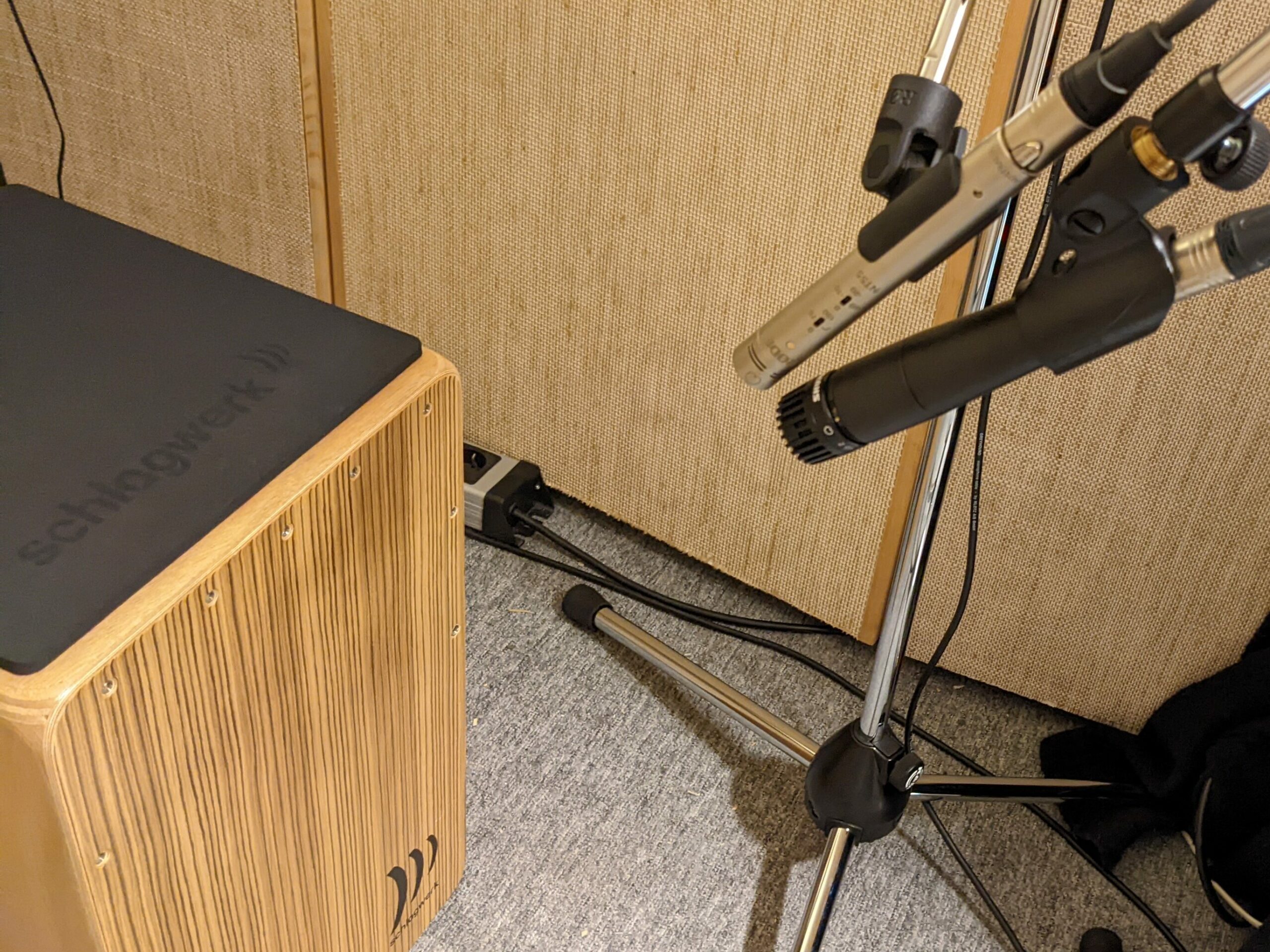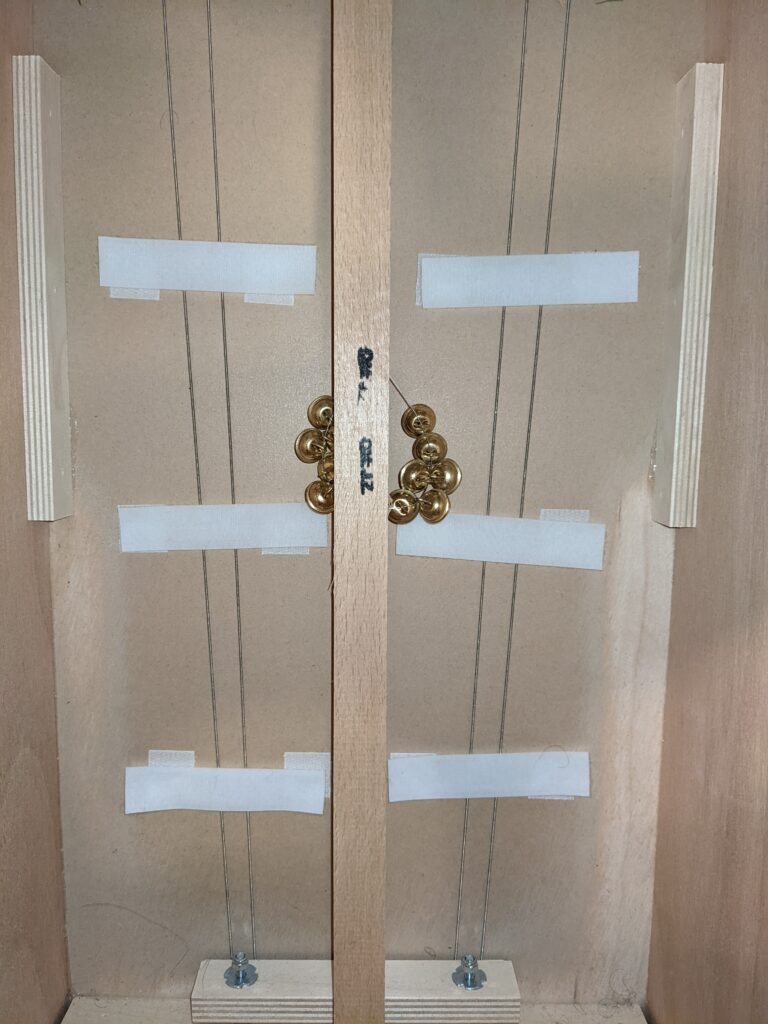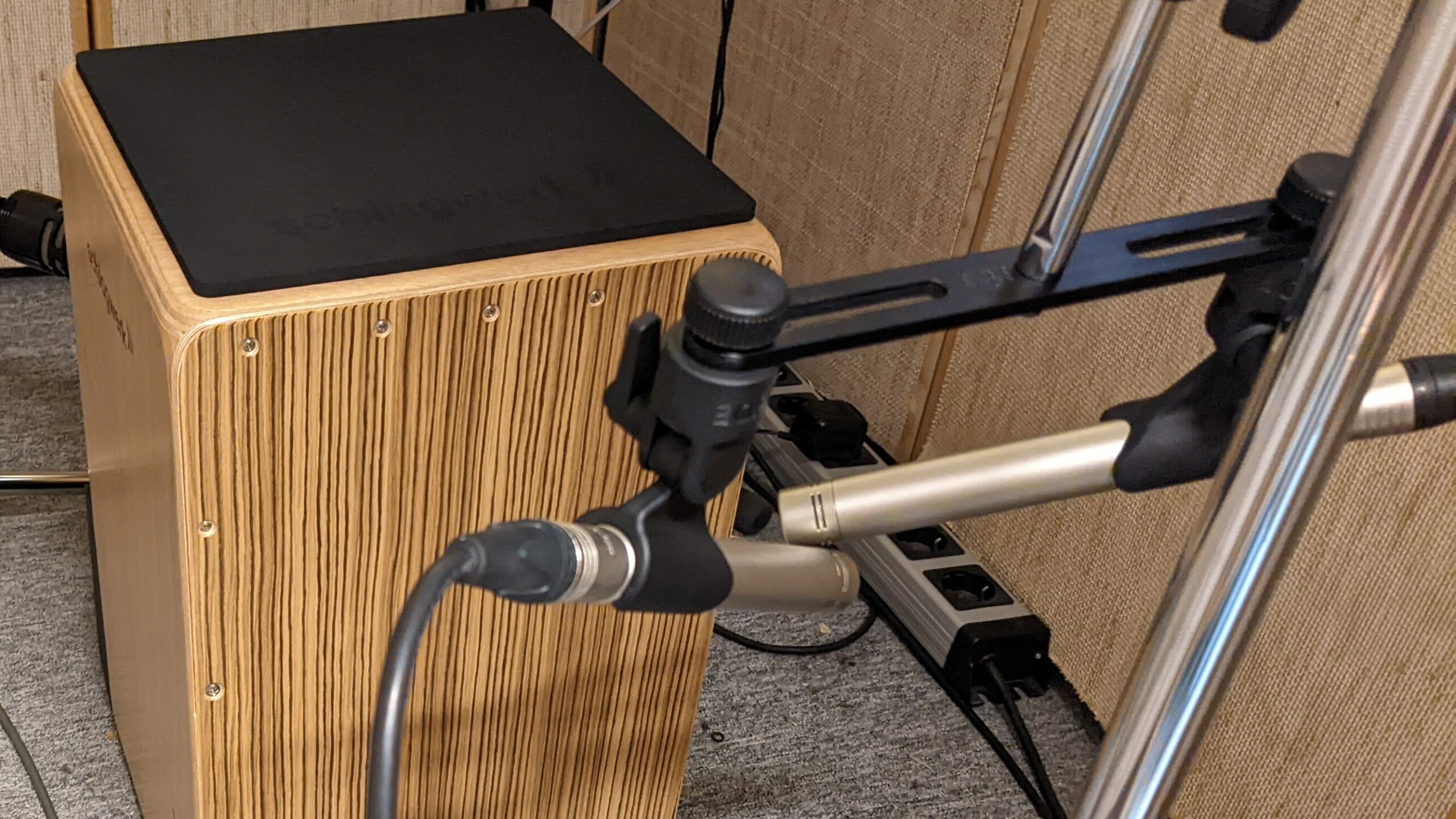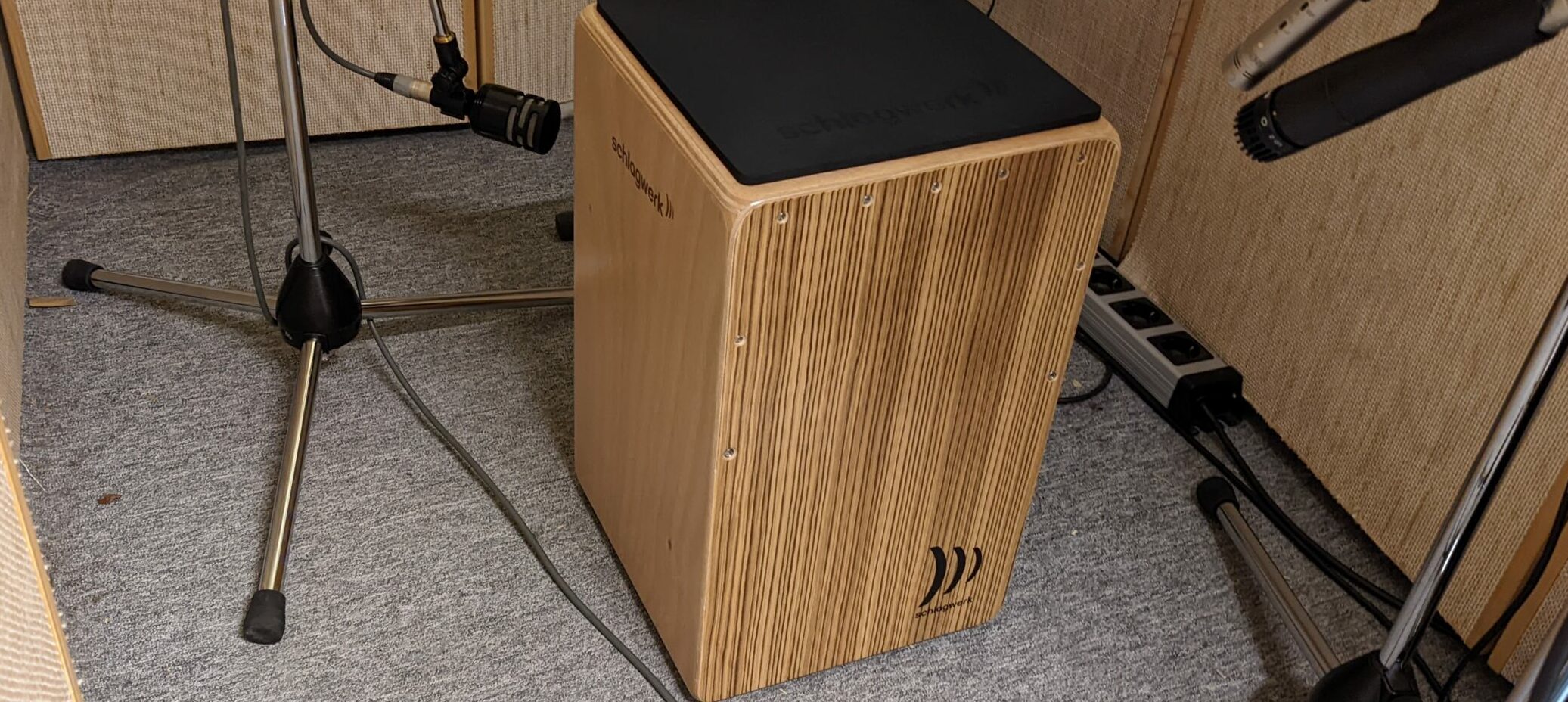Goal
Since I rely a lot on self-recorded samples, I wanted to use this opportunity to re-sample my cajon (a Schlagwerk CP-4011). Cajons seem to be rarely used in a sampled manner, since they mostly give the benefit of transportability compared to a drum set. However, I really like the intimate sound, which makes it a great add-on in projects that require a special non-commercial percussive touch. The outcome should be an extensive sample library that I can make into a digital instrument, which creates an intimate and acoustic vibe that makes musical pieces sound more like recordings than just samples in a sequencer.
It was difficult to find a reference track that captures what I wanted my samples to sound like, since different cajons, like most other musical instruments can sound extremely differently. Additionally, compared to other instruments, there is only a small amount of material available on the internet. However, in the following video, I like the vibe and how full the cajon’s bass sounds while still providing a very crisp upper end of the spectrum.
Setup
Similarly to the setup in the video above, I chose a commonly used professional recording technique for cajons: A microphone in the front for the upper frequencies, and one in the back for the lower ones. One of the most used microphones for the upper frequencies of a cajon seems to be a Shure SM57, while an Audix D6 is a common choice for the lower ends [1][2]. Having both in my setup, I additionally added a Rode NT-5 to compare to the Shure SM57. I recorded inside a semi-anechoic chamber, using a RME Fireface 802 as preamp and interface.

The front microphone is angled at 45 degrees pointing downwards onto the hitting surface, with a distance of around 30cm. In some setups (as in the video above), it is also angled to the side, to make the recording a little softer, but I wanted to make sure to have the same conditions for my right- and left-hand samples, so I let it face the cajon straight-on. I positioned the SM57 and the NT-5 on top of each other, to have direct comparison between the two.
The back microphone is at the same height as the sound hole, positioned around 20cm away from it and angled 45 degrees to one side, to avoid the direct air bursts from the sound hole hitting the microphone. I made some takes with the microphone inside the sound hole at first, but the low frequencies were too prominent for a good result.


Procedure
My cajon has two guitar strings inside, touching the hitting surface, creating a ‘snare’ effect (you will see them on the picture below). I can also adjust the tightness of those strings with two screws, which I do regularly, depending on the use-case. For my sample library, I needed to sample at least two different degrees of tightness for each sound, as well as different hitting velocities. This required new leveling of the microphones after each adjustment of the snare strings.


One notable complication I came across was when trying to make the snare strings as tight as possible to stop them from creating the ‘snare’ effect. This, however, led to the strings imitating guitar strings, creating a high tone. It took me a while to find the cause for the metallic ringing, that I rather supposed to be in the room itself and not inside the cajon. Below you find an example of a recording with that ‘ring’. If you listen closely with higher volume on good speakers or headphones, you will hear a melodic ringing after the hit in there. I solved to problem by loosening the strings a little bit and living with a slight bit of snare sound on the harder hits.
Stereo Recording
I additionally tried to record my cajon in stereo, hoping to get good stereo effects of my right- and left hand hits. I used two Rode NT-5 in an XY-setup, seen on the picture below. However, the distance was not small enough to achieve notable effects, while still being able to play without accidentally hitting the microphone.

Microphone Comparison
While the Shure SM57 is clearly the more common choice for recording cajons [1][2], I actually preferred the Rode NT-5. I was striving to record an intimate sound and wanted to have every slight touch of a finger on there, and while the NT-5 is often criticized for sounding too bright, this was exactly the sound I was looking for. This already became clear to me during recording, but I still recorded all my samples and demos with both microphones to also analyze the recordings more in-depth. The SM57 still sounds very good, I guess it all comes down to personal preference. Below you will find a sound sample in the following structure: a demo of my dry (without snare strings) cajon, using the SM57, then the same sample with the NT-5 (change indicated by a triangle), then a demo of my wet (with snare strings) cajon using the SM57 (change indicated by a triangle), then the same sample with the NT-5 (change indicated by a triangle).
Sample List & Instrument
In total, I extracted and categorized
- left- and right hand samples of dry and wet ghost notes in three different velocities
- left- and right hand samples of dry and wet kicks in four different velocities
- left- and right hand samples of dry and wet snares in four different velocities
- samples of dry and wet rolls in three different velocities
- samples of dry and wet mute kicks in four different velocities,
for two different microphones, making for a total of 116 extracted and catalogued cajon samples. I only slightly leveled some samples afterwards and used a low-pass filter on the samples from the Audix D6 and a high-pass filter on the samples from the Rode NT-5, for them to make sure to not create a comb filter effect.
Below you find a video showcasing the outcome of my instrument, using an AKAI MPK mini with a drum rack & Sampler in Ableton Live 11. The rotary controls are mapped to seamlessly change between the dry and wet (with and without snare) samples.
And as an ending, a short but slightly more complex clip made with the same setup as above. In the middle, all sounds are faded from dry to wet.
